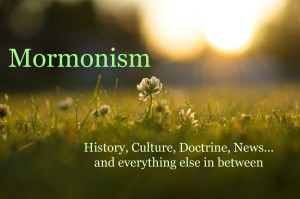This article was previously published on Latterdaysaintwoman.com
Homeschooling is growing in popularity among all religions, and even becoming popular with the non-religious community. Homeschooling for religious purposes is no longer listed as the main reason for homeschooling. The primary reason for homeschooling is to give children a superior education. However, even those LDS parents who homeschool for academic reasons often want to incorporate their religion into their school. This is very easy to do, and will not impede the ability to teach a full academic curriculum. Many of your regular homeschooling activities can also incorporate religious activities.
Reading
 Reading the scriptures will give your child a very large reading vocabulary, since they were not written for children. In addition, they will be able to read well when called on to read in Primary. The scriptures should not be the only reading material, of course. Children need to be exposed to a large library of books, so use the scriptures as one part of your reading day. When you read other books, talk about them in terms of LDS beliefs. Have the characters made good choices? What would the prophet advise them to do? When you read books about people who belong to other religions, discuss the similarities and differences in the religions, and how those differences affect the choices people make. Talk about respect for other faiths.
Reading the scriptures will give your child a very large reading vocabulary, since they were not written for children. In addition, they will be able to read well when called on to read in Primary. The scriptures should not be the only reading material, of course. Children need to be exposed to a large library of books, so use the scriptures as one part of your reading day. When you read other books, talk about them in terms of LDS beliefs. Have the characters made good choices? What would the prophet advise them to do? When you read books about people who belong to other religions, discuss the similarities and differences in the religions, and how those differences affect the choices people make. Talk about respect for other faiths.
Writing
There are many ways to incorporate your religion into your writing day. I know of one family who is re-writing the Book of Mormon. They aren’t changing anything but the language–simply writing it in more modern terms, or perhaps summarizing. However, you could also have children write it as a novel, a play or a script. If an entire book of scripture is too ambitious, invite your children to choose their favorite scripture story and put it into another format. Read the story with the children many times and discuss it. What would the scenery look like? What sort of person was this? While Lehi was preaching, what were Laman and Lemuel doing as they sat in the tent? What was Nephi doing? What were they thinking and how could you show that by their actions and facial expressions? Do, however, expect them to treat the stories and the people with respect. These are scriptures, after all.
Children are often assigned talks in Primary or Sacrament meeting. Writing a talk is a good educational experience, as is, of course, giving the talk. Teach children how to write their own talks and do the writing during school hours. (For help see A Child’s First Talk This method can be adapted to older children. Gradually, they should do more and more on their own.
 Have your children study the types of stories that appear in church magazines. (These can be found online at LDS.org in the Gospel Library.) Encourage them to create their own family magazine on a quarterly basis. They should choose gospel principles that they want to teach and then create a story that will teach the principle in a fun way. Remind them that children should solve their own problems in the stories. The Friend also has games, recipes and crafts and they can create those as well, since writing instructions is an important form of writing. They can put the magazine on the computer and create a web page or print it and mail it to family and friends. This also teaches art, history and various other subjects, including computer skills and business management.
Have your children study the types of stories that appear in church magazines. (These can be found online at LDS.org in the Gospel Library.) Encourage them to create their own family magazine on a quarterly basis. They should choose gospel principles that they want to teach and then create a story that will teach the principle in a fun way. Remind them that children should solve their own problems in the stories. The Friend also has games, recipes and crafts and they can create those as well, since writing instructions is an important form of writing. They can put the magazine on the computer and create a web page or print it and mail it to family and friends. This also teaches art, history and various other subjects, including computer skills and business management.
Math
Try writing your own story problems based on gospel principles or scripture stories. For example:
“Sariah was cooking for her family in the wilderness. Nephi and Sam had gathered five pounds of vegetables for her. She cooked two pounds of them. How many are left over for the next meal?”
“Noah was gathering animals to go on the ark. He gathered two of each kind. If he gathered ten types of animals in one hour, how many animals did he gather all together that hour?”
Tie these to the story you are currently reading to help children remember the story and to make the people seem more real. The children can also create stories based on the scriptures they are reading.
History
History is a wonderful place to tie in religion. When reading a time period that is covered in the scriptures, read the scriptures simultaneously. It can be quite enlightening to see how history and scripture combine, or even conflict.
 What do you do when your history text doesn’t agree with your religious beliefs? Often, history books present Latter-day Saints in a very negative manner and often contain falsehoods. I never use straight textbooks until my children are able to read at a college level, allowing me to select only those books that present the viewpoint I want. When my children are in middle school, I do let them know how outsiders sometimes view us. By then, they are old enough to discuss this problem. Help your children to understand how such stories get spread and what motivations the storytellers might have had in choosing a falsehood.
What do you do when your history text doesn’t agree with your religious beliefs? Often, history books present Latter-day Saints in a very negative manner and often contain falsehoods. I never use straight textbooks until my children are able to read at a college level, allowing me to select only those books that present the viewpoint I want. When my children are in middle school, I do let them know how outsiders sometimes view us. By then, they are old enough to discuss this problem. Help your children to understand how such stories get spread and what motivations the storytellers might have had in choosing a falsehood.
LDS publishers have begun writing excellent books about Latter-day Saints during various times in history. Use these as supplements, not the entire unit, when teaching history to your children. Older children need to use books that are not written from an LDS perspective as well, because they will encounter other perspectives in college. You do not want them to first hear these ideas from someone who can’t explain them from an LDS point of view.
You might try having your children study the church leaders of modern time periods in history and what was going on in the church during various events. Let them write stories about LDS children who lived during the time.
Science
Science gets a little tricky when you are covering creation and a few Biblical events. As with history challenges, it is best to tell your children what the outside world says and then tell them what you believe. Children generally believe whatever they hear first and learn at a young age. If they go to college and hear of evolution for the first time, they will believe you lied to them or hid things, and they will wonder why. This caused a tremendous crisis in faith for some of my Christian friends in college who had gone to religious schools.
The church does not take a stand on how long it took to create the world. The Hebrew word used, yom, can mean day, time or period. Therefore we don’t really know how long it took and it actually doesn’t matter. God wasn’t writing a how-to manual when he had the account of the creation written. Joseph Smith said: “The word create came from the [Hebrew] word baurau which does not mean to create out of nothing; it means to organize; the same as a man would organize materials and build a ship. Hence, we infer that God had materials to organize the world out of chaos——chaotic matter” (Teachings of the Prophet Joseph Smith, sel. Joseph Fielding Smith [1976], 350-51).

To read more of Terrie’s articles, click the picture.
Because we have few details to work with, this can be an interesting and challenging topic to research as a family. Go to LDS.org, the official church site. Click on search and then on search gospel library. Type in the word creation. Many choices come up. Assign children to read the articles in the magazines and manuals they are old enough to understand. Then plan a family home evening on the subject in which everyone presents their findings and decides what they think happened. Remind them that how the creation happened is not actually the important part of the story. What matters is that it did happen and the reason it happened.
The Institute of Religion Manual is a great place to start your research on creation. It has a great deal of information on science and creation.
This approach can be used whenever you find a conflict.
About Terrie Lynn Bittner
The late Terrie Lynn Bittner—beloved wife, mother, grandmother, and friend—was the author of two homeschooling books and numerous articles, including several that appeared in Latter-day Saint magazines. She became a member of the Church at the age of 17 and began sharing her faith online in 1992.






